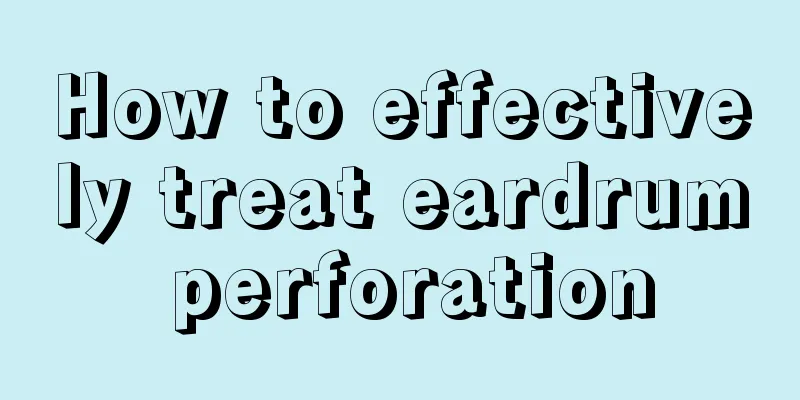How to effectively treat eardrum perforation

|
Eardrum perforation is very common in clinical practice, and this situation is usually caused by trauma. Regarding the treatment of eardrum perforation, the treatment method can be determined based on the severity. The more common ones are medication and surgery, but medication is prone to recurrence. 1. Drug treatment: General drug therapy mainly aims to reduce the size of the perforation through antibacterial, pus drainage and swelling reduction. However, it is difficult to achieve the healing of the perforation with drug treatment alone, and it is very easy to relapse. 2. Traditional surgical treatment requires making an incision inside or behind the ear and taking autologous tissue and implanting it in the eardrum. Patients using this treatment are very prone to postoperative bleeding and are also prone to sequelae. 3. If the perforation is caused by trauma and there is no infection, you can plug the ear canal with a sterilized dry cotton ball and use antibiotics to prevent infection. No local ear drops are needed; 4. If there is pus discharge from the middle ear, anti-inflammatory treatment should be given. In the acute stage, systemic antibiotics should be used, and local chloramphenicol ear drops or ofloxacin ear drops should be used for ear baths. If there is pus discharge from the middle ear, anti-inflammatory treatment should be given. In the acute stage, oral antibiotics should be used, and local 2.5% chloramphenicol ear drops or 0.3% ofloxacin ear drops should be used for ear baths. 5. If cholesteatoma is formed, surgical treatment is required as soon as possible. 6. There are two methods of repairing the eardrum: surgery and cauterization: The surgical method is to make an incision inside or behind the ear, and implant the autologous tissue in the position of the eardrum. This method is suitable for patients with large perforation of the eardrum or ossicular defects, interruptions or early cholesteatoma. The cauterization method involves applying a special solution to the edge of the perforated eardrum to stimulate the growth of the eardrum. This method does not require surgery, is simple and easy, and can be performed in an outpatient clinic. Each session lasts 5 to 10 minutes and is basically painless. However, follow-up visits and re-cauterization are required every 7 to 10 days until the eardrum heals. |
<<: What are the symptoms of binocular refractive error?
>>: What are the ways to prevent refractive error?
Recommend
Does breast pain mean breast cancer? Six symptoms of breast cancer you must know
Breast cancer can cause serious harm. Many female...
How to remove blood stains from clothes
Washing clothes is something everyone needs to do...
What to do if you have back pain due to renal hamartoma
Renal hamartoma is a benign disease that occurs i...
Can taking hormones really help you grow taller?
A child's height is mainly inherited from his...
How to unclog the clogged scalp hair follicles? Here are the effective methods for you
The consequences of blocked scalp hair follicles ...
The order of using foundation and BB cream
Newbies who are putting on makeup for the first t...
What to do if you have wrinkles on your eyes
The appearance of wrinkles not only indicates our...
Can wearing a condom transmit AIDS?
In fact, many people are very afraid of AIDS beca...
How much do you know about the symptoms of pancreatic cancer?
What are the symptoms of pancreatic cancer? Many ...
Will puffy eyes grow back after fat removal?
Puffy eyelids are not unfamiliar to many people. ...
Is japonica rice a type of rice?
What kind of rice is japonica rice? Many people l...
How to treat alternating nasal congestion caused by rhinitis
Alternating nasal congestion caused by rhinitis i...
The effect of washing face with mugwort water
Artemisia argyi is what people commonly call mugw...
Is colon cancer inherited by males or females?
With the development of society, the improvement ...
There are many small red bumps on my chest
Many times, we will have many small red bumps on ...









